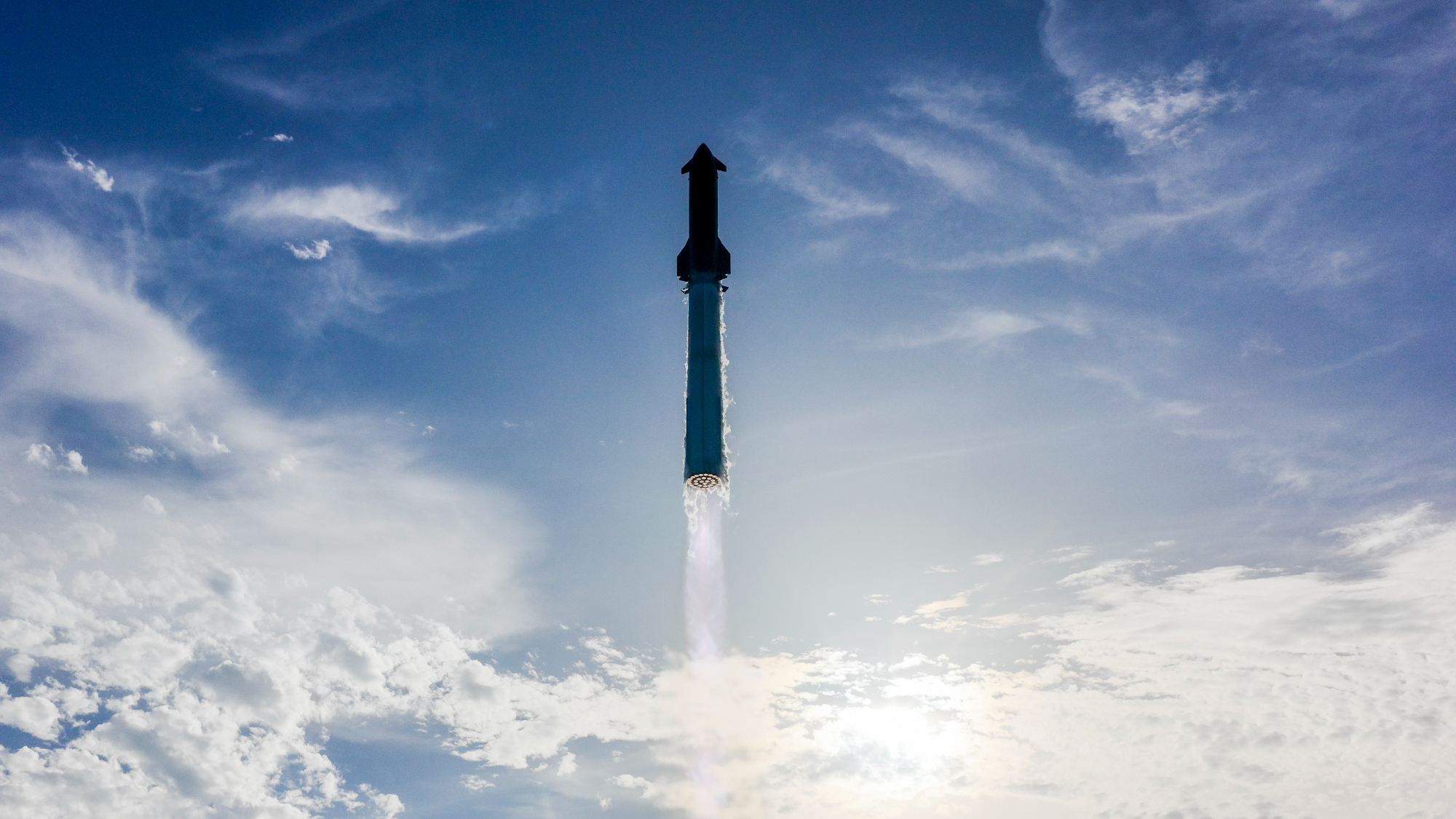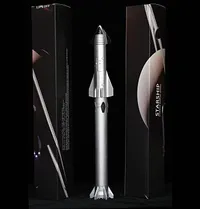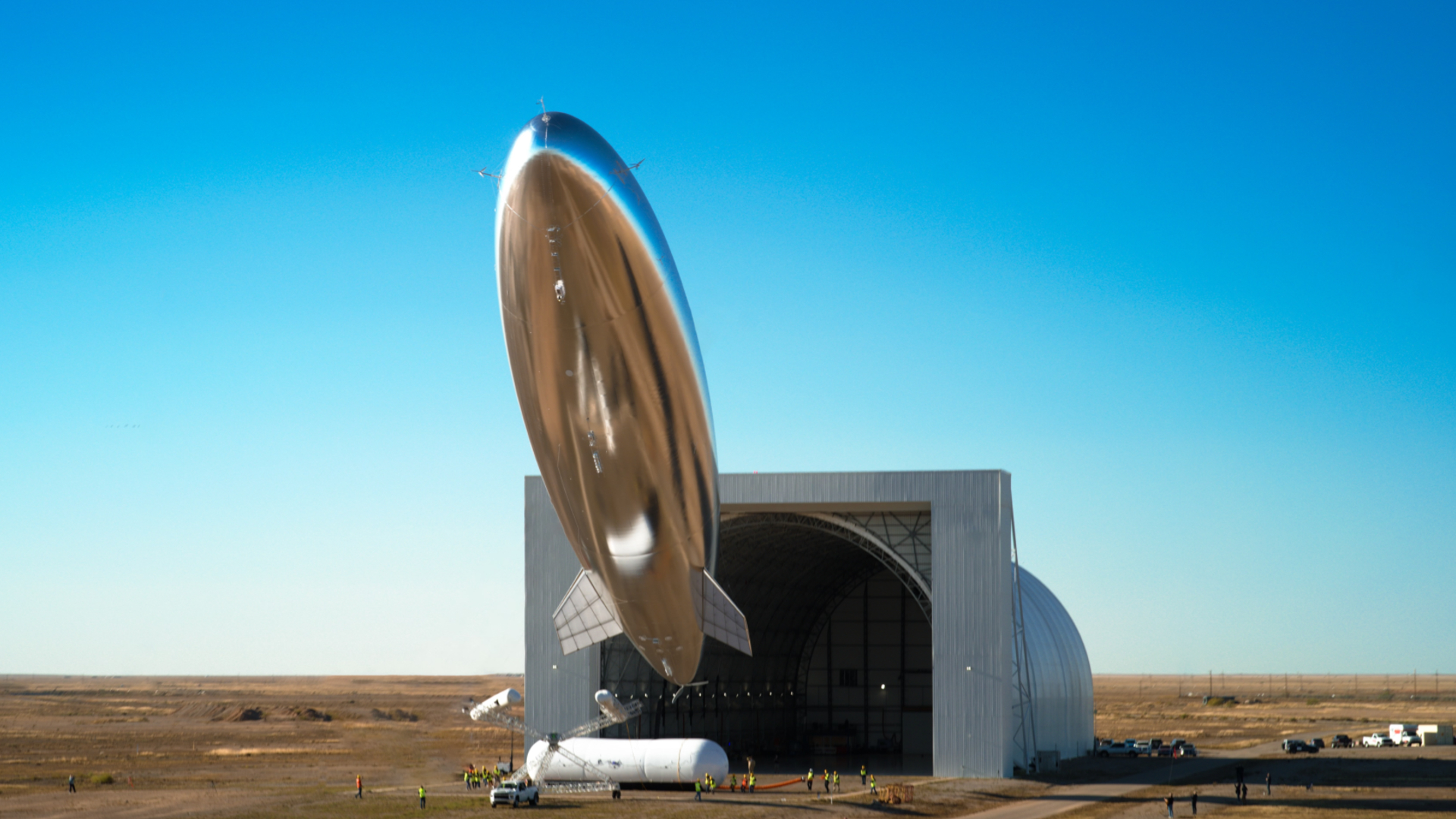What's next for SpaceX's Starship Mars rocket after Flight 10 success?

Starship performed very well on Tuesday (Aug. 27), but SpaceX will soon move on from the shiny silver vehicle.
From the current version of it, anyway: The company plans to continue iterating with Starship, which checked all of its boxes during its 10th-ever test flight on Tuesday evening.
SpaceX is developing Starship to help humanity settle Mars, and to achieve that ambitious goal, the megarocket — already the biggest and most powerful launcher ever built — needs to get even larger, according to Elon Musk.
Starship consists of two stainless-steel elements: a huge booster called Super Heavy and an upper-stage spacecraft known as Starship, or Ship for short. Both stages are designed to be fully and rapidly reusable, and both are powered by SpaceX's next-gen Raptor engine.
The current Starship variant, known as Version 2, stands 397 feet (121 meters) tall and features a total of 39 Raptors — 33 on Super Heavy and six on Ship.
Its successors will be even bigger and more powerful. In a livestreamed Starship update this past May, Musk said that the next iteration, V3, will be 408 feet (124.4 m) tall. One of his slides also depicted a variant described as "Future Starship," which will tower at a whopping 466 feet (142 m).
This latter vehicle is presumably Starship V4, which Musk discussed in an X post on Monday evening (Aug. 25), the day before Starship Flight 10 lifted off.
Breaking space news, the latest updates on rocket launches, skywatching events and more!
"Starship V4 will have 42 engines when 3 more Raptors are added to a significantly longer ship. That will fly in 2027. Starship V3 is a massive upgrade from the current V2 and should be through production and testing by end of year, with heavy flight activity next year," Musk wrote in the post.
Some of those V3 flights will head to Mars, if all goes to plan: SpaceX is targeting 2026 for its first-ever Starship Red Planet missions, which will be uncrewed, stripped-down test flights.
"They're just going to put minimally viable landers on the surface — land right on the skirt, no [landing] legs," SpaceX spokesman Dan Huot said during a Flight 10 webcast on Monday evening. (A launch attempt that day was scrubbed due to weather.)
"This will just help prove we can actually get to Mars," he added. "Focus on learning just as much as humanly possible, demonstrating what's needed for Mars transit and the ultimate landing."
Starship Die Cast Rocket Model Now $47.99 on Amazon.
If you can't see SpaceX's Starship in person, you can score a model of your own. Standing at 13.77 inches (35 cm), this is a 1:375 ratio of SpaceX's Starship as a desktop model. The materials here are alloy steel and it weighs just 225g.
If all goes well with that experimental Mars fleet, SpaceX will ramp things up during the next Red Planet launch window in 2028-2029. (Mars and Earth align for interplanetary flight just once every 26 months.)
"We'll attempt to land the initial infrastructure and start delivering more equipment while evaluating available resources on the planet," said SpaceX's Amanda Lee, who co-hosted Monday's webcast with Huot.
"And we'll also have Optimus on board for the ride, designed to do the initial heavy lifting," she noted, referring to the humanoid robot built by Tesla, one of Musk's other companies.
Beginning with the 2030-2031 window, "we'll continue to increase the amount of payload we're sending on each ship as we're building out more infrastructure, finding resources, generating propellant for ships to come back from Mars," Huot said. "By 2033, we want to double the amount of payload per ship as we just get closer and closer to building a self-sustaining presence on the Red Planet."
Getting to this point won't be easy; after all, Starship has not even reached Earth orbit yet. (All of its jaunts to date have been suborbital.) And its most recent three test flights before yesterday's ended in the premature loss of Ship.
Musk highlighted some of the biggest hurdles during Monday's webcast, which he dropped into for about 20 minutes. One big challenge, he said, will be perfecting Ship's heat shield, which protects the vehicle during its trips through Earth's atmosphere (and those of other planets). This is a key technology required for full and rapid reusability, Musk stressed.
Another challenge is the filling of Ship's tanks in Earth orbit. The upper stage launches with little fuel onboard, to save weight that can be allocated to payload. So Ships bound for the moon or Mars must rendezvous with multiple tankers in Earth orbit before they get on their way.
"No one has ever demonstrated propellant transfer in orbit, to the best of my knowledge," Musk said during Monday's webcast. "This would be propellant transfer at a very large scale."
SpaceX aims to demonstrate orbiting refueling with Starship next year, he added. And Musk voiced optimism about the heat-shield issue as well.
"I'm confident that the SpaceX team, which is incredibly talented, will achieve these goals, and we will be landing ships on Mars in the future and building life on Mars," he said.

Michael Wall is a Senior Space Writer with Space.com and joined the team in 2010. He primarily covers exoplanets, spaceflight and military space, but has been known to dabble in the space art beat. His book about the search for alien life, "Out There," was published on Nov. 13, 2018. Before becoming a science writer, Michael worked as a herpetologist and wildlife biologist. He has a Ph.D. in evolutionary biology from the University of Sydney, Australia, a bachelor's degree from the University of Arizona, and a graduate certificate in science writing from the University of California, Santa Cruz. To find out what his latest project is, you can follow Michael on Twitter.
You must confirm your public display name before commenting
Please logout and then login again, you will then be prompted to enter your display name.

